Boost Sales and Marketing with Chatbots and VAs
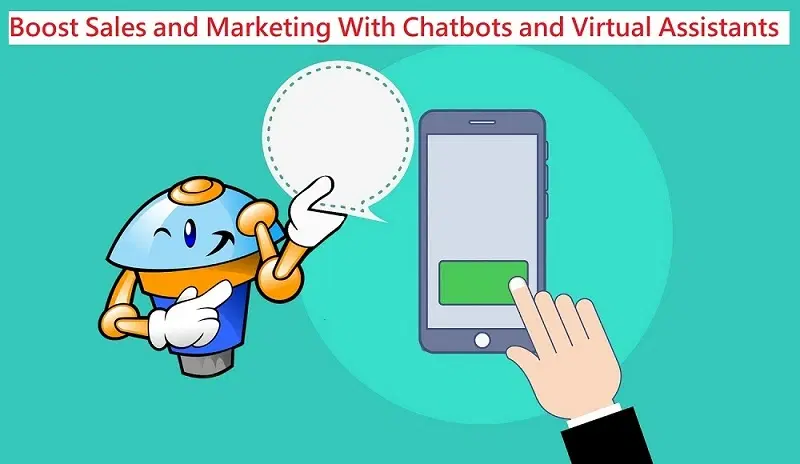

Sales and marketing are the backbone of any successful business. As technology advances, so do the tools available to improve the efficiency and productivity of these functions. Chatbots and Virtual Assistants (VAs) have become increasingly popular in recent years, offering a range of benefits to sales and marketing teams.
In this article, we will explore the differences between chatbots and VAs, and the various types of chatbots and VAs available for sales and marketing. We will also see the benefits of implementing these technologies. Additionally, we will cover the steps required to successfully implement chatbots and VAs into your sales and marketing strategy. Finally, we will discuss future trends and opportunities for chatbots and VAs, including artificial intelligence and machine learning, omnichannel integration, voice assistants, and virtual and augmented reality. In the end, we also included some FAQs about the topic of discussion.
Note: By mentioning Virtual Assistant, we refer to AI-powered Virtual Assistant.
The difference between a chatbot and a virtual assistant
Chatbots and Virtual Assistants (VAs) have become increasingly popular in sales and marketing. They allow businesses to improve their productivity, efficiency, and customer engagement. These tools use artificial intelligence (AI) and machine learning to communicate with customers and perform tasks previously done by humans, such as answering questions, providing recommendations, and processing orders.
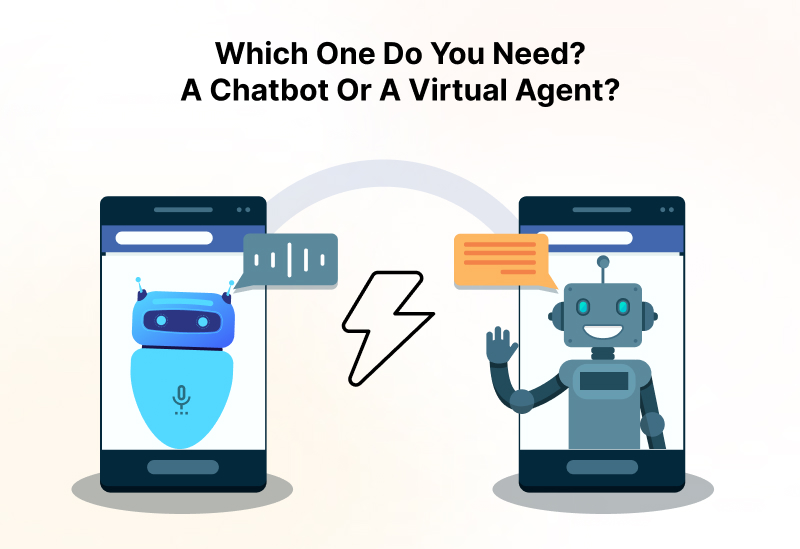
While both chatbots and VAs serve similar functions, there are key differences between the two. Chatbots are designed to handle specific tasks and are often integrated into messaging platforms such as Facebook Messenger or WhatsApp. They use a set of predefined responses to answer customer queries and can be trained to recognize specific keywords or phrases. On the other hand, VAs are more advanced and can handle a wider range of tasks. They are typically integrated into a company’s website or mobile app and use natural language processing to understand and respond to customer queries in a conversational manner.
Chatbots and Virtual Assistants have become increasingly popular as businesses seek ways to improve customer service and streamline operations. They offer a range of benefits, including 24/7 availability, faster response times, and reduced workload for customer service representatives.
Types of Chatbots and VAs in Sales and Marketing
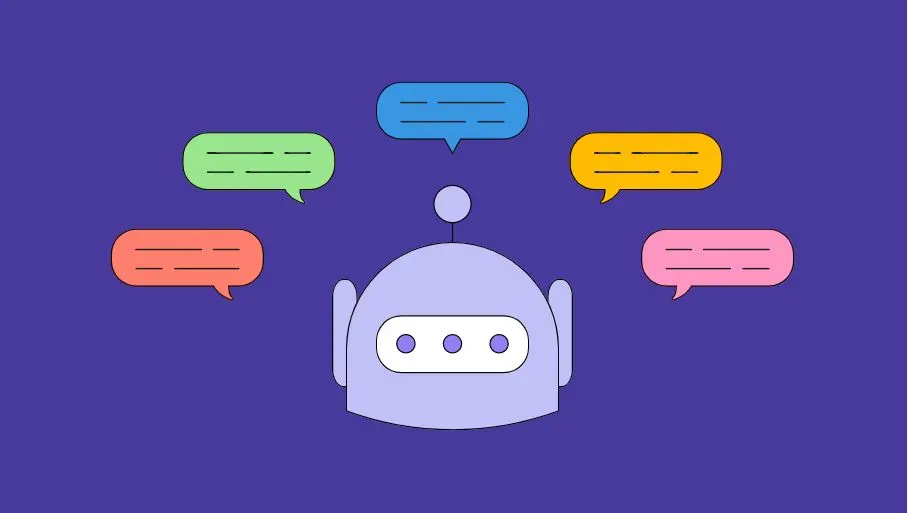
Some of the types of Chatbots and Virtual Assistants that are commonly used in sales and marketing include:
- Lead Generation Chatbots: These are designed to engage users and collect their contact information to generate leads. They can also be integrated into landing pages, websites, and social media platforms to help businesses capture potential customers’ attention and provide them with relevant information.
- Customer Support Chatbots: These provide 24/7 customer support by answering common questions, resolving issues, and directing users to the appropriate resources. They can also handle various tasks, including tracking orders, providing product information, and managing returns.
- Sales Chatbots: These focus on driving sales by providing personalized recommendations, answering product-related questions, and guiding users through purchasing. They can also help businesses upsell and cross-sell by suggesting complementary products or services.
- Virtual Personal Assistants: These Virtual Assistants are designed to provide personalized support to users by understanding their preferences and behavior. They can also assist with scheduling appointments, booking travel arrangements, and managing to-do lists.
- Social Media Chatbots: These are integrated into social media platforms to engage users and provide support. They can also help businesses respond quickly to new messages.
Benefits of Chatbots and VAs in Sales and Marketing
Chatbots and virtual assistants (VAs) have transformed how businesses interact with customers. Sales and marketing are no exceptions to this trend. They have proved to be a valuable addition to the sales and marketing teams by providing personalized and instant assistance to customers.
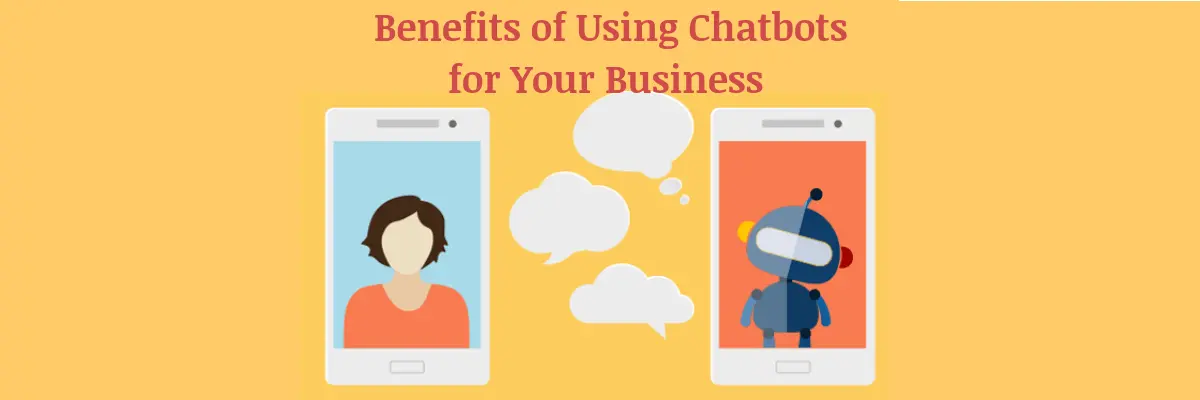
Here are some benefits they provide for the sales and marketing process.
Increased efficiency and productivity
Chatbots and Virtual Assistants (VAs) have become integral to modern sales and marketing strategies. One of the key benefits of using chatbots and VAs is their ability to increase efficiency and productivity. By automating routine tasks such as lead generation, lead nurturing, and customer support, businesses can free up their sales and marketing teams to focus on more high-value activities, such as building customer relationships and closing deals. Chatbots and VAs can also reduce response times, provide 24/7 support, and deliver personalized interactions at scale. With the ability to learn and improve over time, these technologies offer a cost-effective way to improve sales and marketing performance and drive business growth.
According to a report by Grand View Research, the global chatbot market size is expected to reach USD 9.4 billion by 2024, with a compound annual growth rate (CAGR) of 24.3% from 2019 to 2024. Similarly, the virtual assistant market is projected to grow at a CAGR of 34.4% from 2020 to 2027, as per a report by ResearchAndMarkets.com.
Enhanced lead generation and conversion rates
Chatbots and Virtual Assistants (VAs) are transforming how businesses approach lead generation and conversion. By leveraging AI-powered chatbots, businesses can engage with potential customers in real time, delivering personalized experiences that increase the likelihood of conversion. Moreover, these tools can qualify leads, answer frequently asked questions, and provide valuable insights into customer behavior. Chatbots can also assist with lead nurturing, using targeted messaging to keep leads engaged until they are ready to convert. With VAs, businesses can provide a more human-like experience, utilizing natural language processing and sentiment analysis to understand customer needs and preferences. Chatbots and VAs can help businesses increase revenue and accelerate growth by enhancing lead generation and conversion rates.
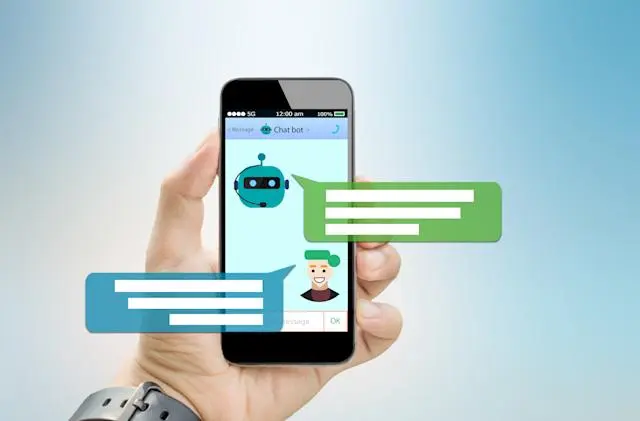
Improved customer service and engagement
One of the most significant benefits of chatbots and VAs in sales and marketing is improved customer service and engagement. With chatbots, customers can get instant responses to their queries, which leads to a higher satisfaction rate. Moreover, chatbots can provide personalized recommendations to customers based on their previous purchase history and preferences. It can possibly result in increasing the chances of a sale. Additionally, chatbots and VAs can help businesses save time and money by automating repetitive tasks such as answering frequently asked questions and providing basic information about products or services. It also allows sales and marketing teams to focus on more complex tasks like lead generation and closing deals.
Chatbots and VAs are capable of handling a large number of customer inquiries simultaneously, reducing response time and improving customer satisfaction. For instance, TD Ameritrade, a financial services company, implemented a chatbot that reduced their email response time by 98%. Moreover, chatbots and VAs can also provide personalized product recommendations to customers, resulting in increased sales. Sephora, a beauty retailer, increased its conversion rate by 11% after implementing a chatbot that provided personalized product recommendations.
Cost savings and scalability
Chatbots and virtual assistants (VAs) have become an integral part of sales and marketing strategies for businesses of all sizes. One of the key benefits of using chatbots and VAs is the cost savings they offer. By automating repetitive tasks such as answering customer queries, businesses can reduce the need for human resources, significantly lowering operating costs. Chatbots and VAs offer scalability, allowing businesses to handle increasing customer inquiries without additional staff. This makes chatbots and VAs cost-effective for businesses that want to improve customer service and engagement while controlling costs.
How to implement Chatbots and VAs in Sales and Marketing
Implementing chatbots and VAs in sales and marketing requires a systematic approach, starting with identifying the business needs and goals. The next step involves selecting the appropriate technology platform, designing a conversational flow, and integrating the chatbot or VA with the existing systems. Training the chatbot or VA and continuous monitoring and improvement is crucial for successful implementation.
Define your sales and marketing goals and use cases for chatbots and VAs
Implementing chatbots and virtual assistants (VAs) in sales and marketing can be a game-changer for businesses. Specially for those who are looking to enhance customer service and engagement. However, before implementing chatbots and VAs, defining your sales and marketing goals and use cases is essential. This involves identifying areas where chatbots and VAs can provide value to customers and improve business outcomes. For example, chatbots and VAs are helpful lead generation, customer service, and personalized recommendations. By defining your goals and use cases, you can ensure that the chatbot or VA is designed to meet your business needs.
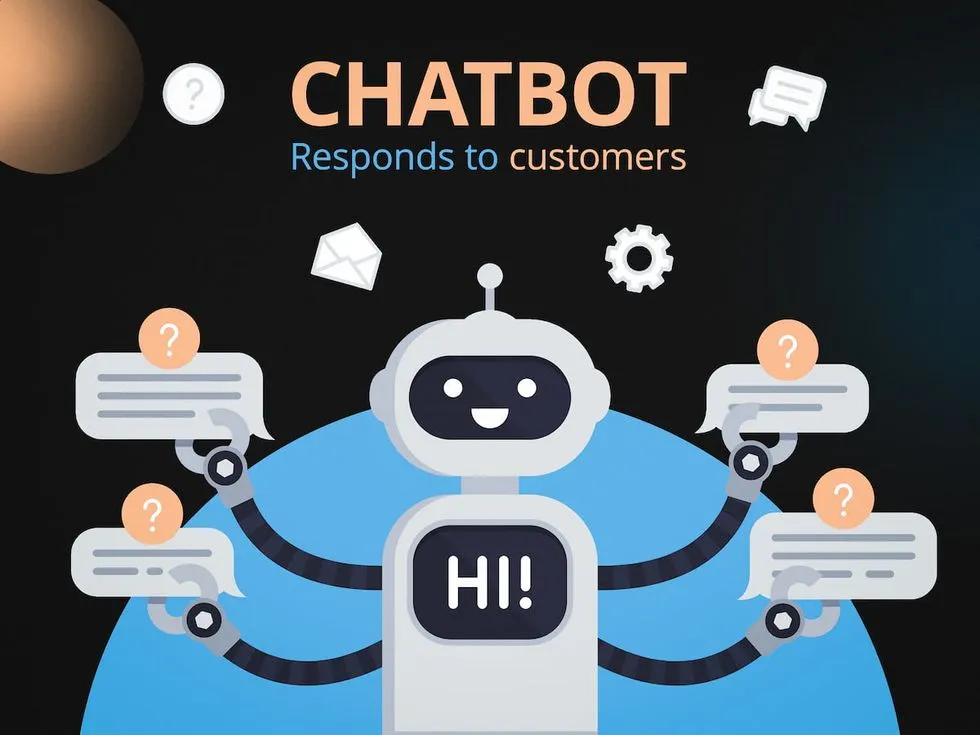
Choose the right chatbot and VA platform and provider that aligns with your sales and marketing strategy
This part is critical to implementing a chatbot or VA for your sales and marketing plan. Choosing the right chatbot and virtual assistant (VA) platform is critical to the success of your sales and marketing strategy. Hence, selecting a provider that aligns with your marketing goals, target audience, and brand values is important. For example, if you’re targeting younger consumers, choose a platform offering voice-enabled chatbots or a provider specializing in developing chatbots for social media platforms like Facebook or Twitter. Some popular chatbot and VA platforms include Microsoft Bot Framework, Dialogflow, and IBM Watson. For example, American Express has implemented a chatbot called Amex bot, which allows customers to check their account balance, make payments, and receive account alerts.
Choosing the right chatbot and VA platform and provider can help you create a seamless and effective customer experience. It can also help in driving sales and marketing outcomes.
Seamlessly integrate chatbots and VAs with your existing sales and marketing systems and workflows
Seamlessly integrating chatbots and virtual assistants (VAs) with your existing systems and workflows is crucial for maximizing the benefits of these technologies. Integration ensures that the chatbot or VA can access relevant customer data, such as purchase history or account information, which businesses use to personalize the customer experience. Additionally, integration can help automate tasks and streamline workflows, increasing efficiency and productivity.
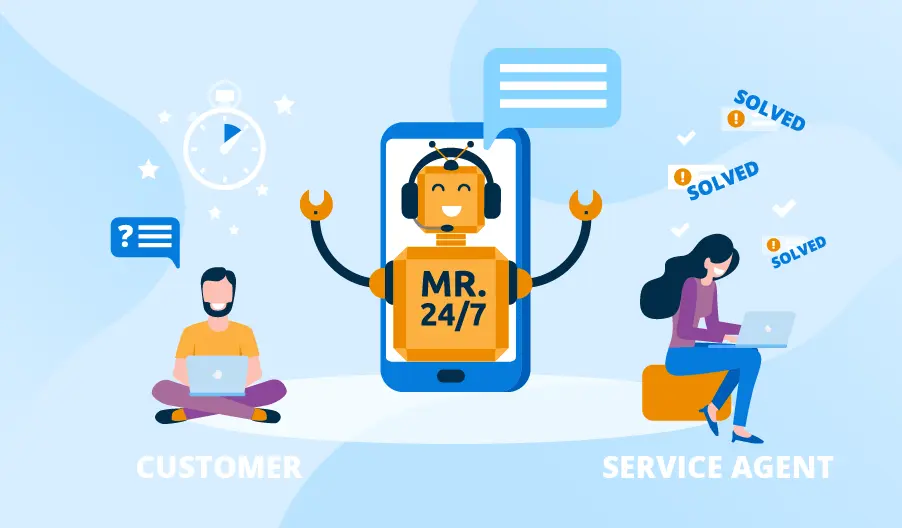
According to a study by Oracle, businesses that integrate chatbots with their CRM systems can see a 35% reduction in customer service costs. Seamless integration can improve data accuracy and consistency, resulting in better insights and decision-making capabilities for sales and marketing teams.
Train and maintain chatbots and VAs to deliver an exceptional experience to your customers
Training and maintaining chatbots and virtual assistants (VAs) is crucial for delivering an exceptional customer experience. This involves training the chatbot or VA to understand customer queries and respond appropriately. It is possible by using natural language processing (NLP) and machine learning algorithms. Regular conversational flow testing and refinement can also improve accuracy and reduce errors.
It’s also important to monitor the chatbot or VA’s performance and user feedback to identify areas for improvement. For example, if customers frequently ask questions the chatbot cannot answer, this may indicate a gap in the training data or conversational flow. By continually training and maintaining the chatbot or VA, businesses can ensure that they deliver a seamless. Hence, they can personalized experience to their customers, improving customer satisfaction and loyalty.
Future Trends and Opportunities for Chatbots and VAs in Sales and Marketing
Chatbots and virtual assistants (VAs) surely are going to play an increasingly important role in sales and marketing. Future trends include such as using chatbots and VAs for augmented reality (AR) and virtual reality (VR) experiences, personalized content recommendations, and integration with voice assistants like Alexa and Google Home.
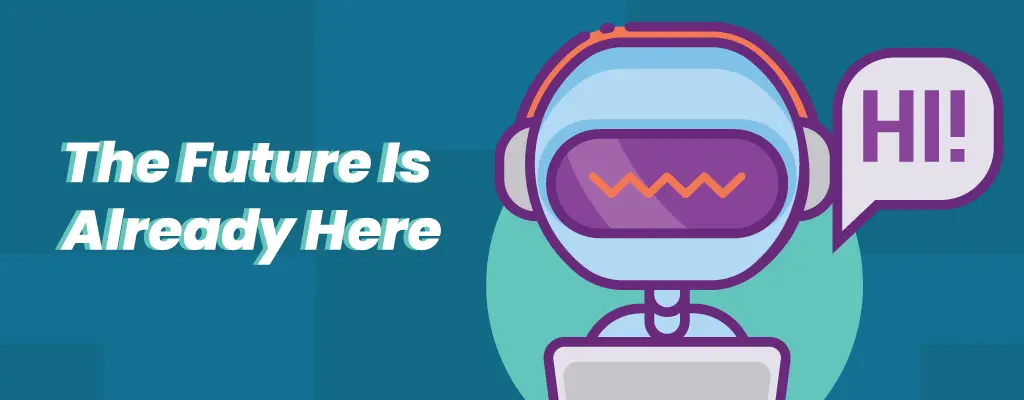
Artificial Intelligence and Machine Learning
Chatbots and virtual assistants (VAs) are becoming increasingly popular in the world of sales and marketing, thanks to the advancements in artificial intelligence (AI) and machine learning (ML) technologies. These intelligent assistants can understand natural language, analyze data, and provide personalized recommendations to customers, resulting in enhanced customer experience and increased sales.
AI and ML technologies are constantly evolving, so chatbots and VAs will continue improving their capabilities, such as natural language processing and sentiment analysis. This will enable them to provide more accurate and personalized recommendations to customers, leading to even better customer experiences and higher sales.
Omni-Channel Integration
Omni-channel integration seamlessly integrates different communication channels, such as email, social media, and chatbots, to create a cohesive customer experience. Chatbots and virtual assistants (VAs) are crucial in this integration by providing consistent and personalized support across all channels.
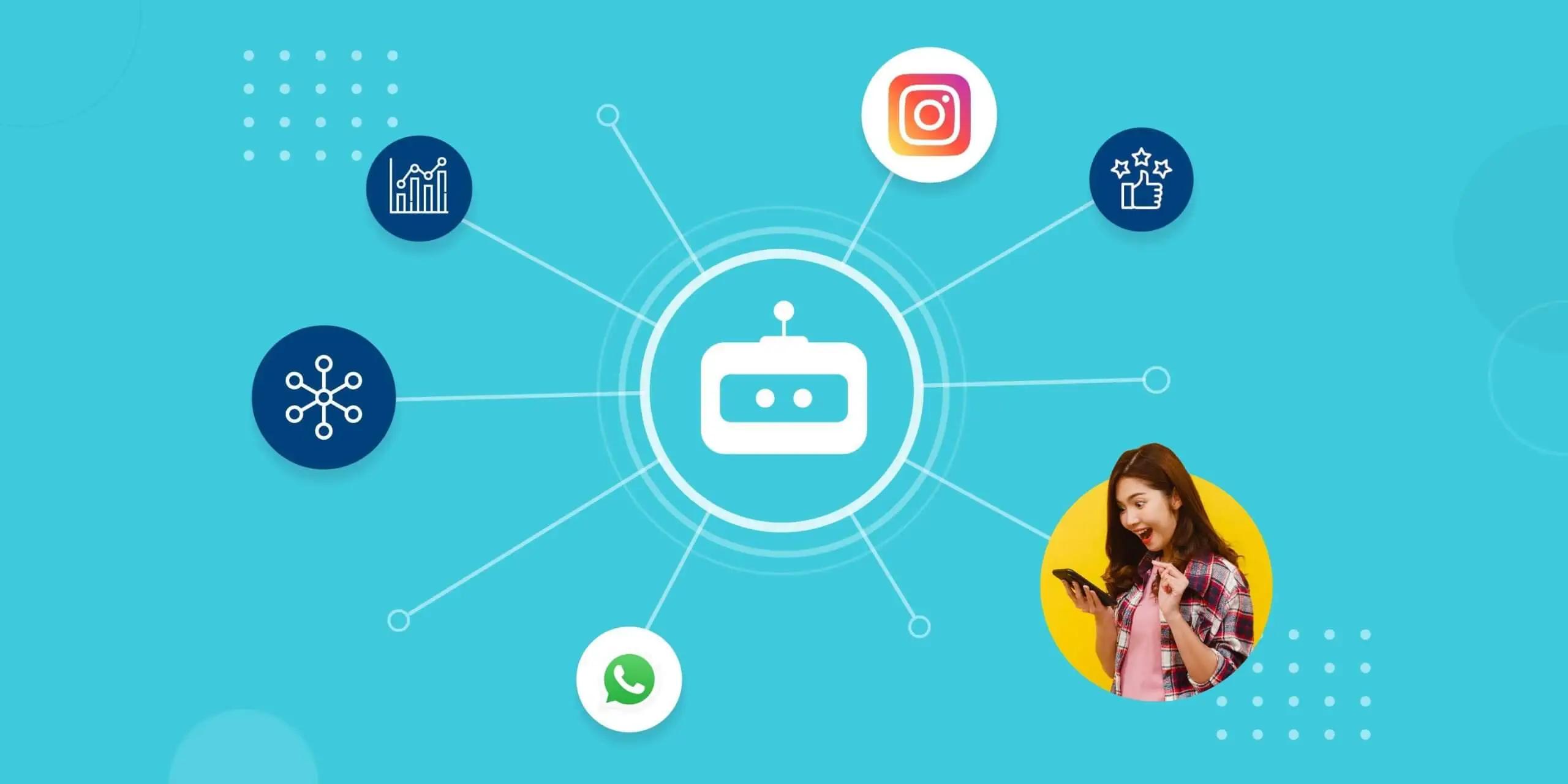
By integrating chatbots and VAs into an omnichannel strategy, businesses can offer customers a seamless experience that allows them to interact with the brand on their preferred channel. This leads to better engagement, increased customer satisfaction, and higher conversion rates. One example of successful omnichannel integration is Domino’s Pizza, which uses chatbots to take orders and track deliveries through messaging apps, social media, and even voice assistants like Amazon’s Alexa. As a result, Domino’s has experienced a significant increase in sales and customer satisfaction.
Voice Assistants and Natural Language Processing
Voice assistants and natural language processing (NLP) are rapidly advancing and transforming how consumers interact with businesses. Chatbots and virtual assistants (VAs) can now understand and respond to human language. It also makes it easier for consumers to access information and complete transactions.
According to a study by ComScore, 50% of all searches were voice searches in 2022, and 55% of households had a smart speaker in 2022. This indicates the growing importance of voice assistants in sales and marketing.
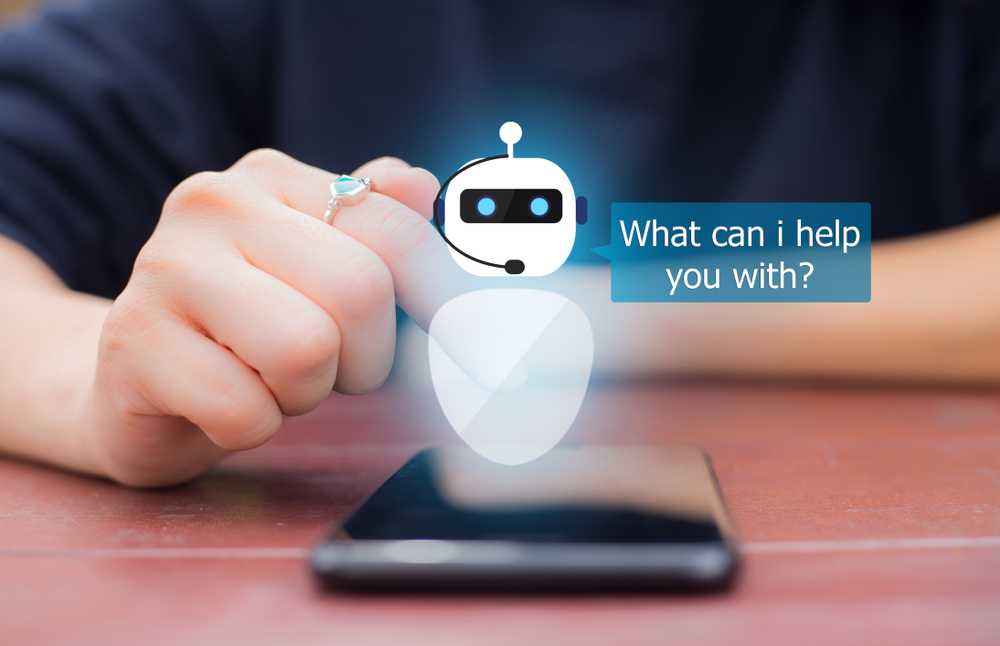
Moreover, businesses that have implemented voice-enabled chatbots and VAs have experienced significant improvements in customer engagement and conversion rates. For instance, H&M implemented a voice-enabled chatbot that resulted in a 32% increase in online sales. Ultimately, Chatbots and VAs will become even more capable of understanding and responding to human language. This will lead to more natural and intuitive interactions, further enhancing the customer experience and driving sales.
Virtual and Augmented Reality
Virtual and augmented reality (VR/AR) are rapidly evolving technologies with significant opportunities for chatbots and virtual assistants (VAs) in sales and marketing. VR/AR can create immersive experiences that allow consumers to interact with products and services in new and engaging ways.
One example of the successful integration of VR/AR and chatbots is IKEA’s Place app. The app allows customers to virtually place IKEA furniture in their homes using their smartphone camera. A chatbot is also available to answer any questions customers may have. As VR/AR technology advances, chatbots and VAs will play a crucial role in creating more immersive and personalized consumer experiences. This will ultimately lead to increased engagement, customer satisfaction, and sales.
FAQs
- What is the difference between sales and marketing?
Ans. Sales involve converting leads into customers by closing deals and generating revenue. On the other hand, marketing is the process of promoting and creating awareness of products or services to potential customers through various channels such as advertising, social media, and email campaigns. Sales mainly focus on the final stage of the customer journey. Marketing encompasses the entire process, from brand awareness to lead generation.
- Can chatbots and VAs help increase sales and marketing ROI?
Ans. Yes, chatbots and VAs can help increase sales and marketing ROI by automating tasks, providing 24/7 customer support, and improving overall customer engagement.
- Are chatbots and VAs capable of handling complex sales and marketing tasks?
Ans. Yes, chatbots and VAs can handle complex sales and marketing tasks such as lead nurturing, customer segmentation, and personalized product recommendations using machine learning and AI algorithms.
- How can chatbots and VAs be integrated with other sales and marketing tools, such as CRM systems?
Ans. Yes, chatbots and VAs can be integrated with CRM systems through API or webhook connections. This allows for the seamless transfer of customer data between platforms, enabling businesses to improve their sales and marketing efforts by leveraging the insights from the chatbot and VA interactions.
- How can businesses measure the effectiveness of chatbots and VAs in sales and marketing?
Ans. Businesses can measure the effectiveness of chatbots and VAs in sales and marketing. They can do so by analyzing metrics such as response time, customer satisfaction, lead conversion rate, and engagement levels. These metrics can be tracked and analyzed using tools like Google Analytics, CRM software, or chatbot-specific analytics platforms.
Tagged
Share This Article
Sales and marketing are the backbone of any successful business. As technology advances, so do the tools available to improve the efficiency and productivity of these functions. Chatbots and Virtual Assistants (VAs) have become increasingly popular in recent years, offering a range of benefits to sales and marketing teams.
In this article, we will explore the differences between chatbots and VAs, and the various types of chatbots and VAs available for sales and marketing. We will also see the benefits of implementing these technologies. Additionally, we will cover the steps required to successfully implement chatbots and VAs into your sales and marketing strategy. Finally, we will discuss future trends and opportunities for chatbots and VAs, including artificial intelligence and machine learning, omnichannel integration, voice assistants, and virtual and augmented reality. In the end, we also included some FAQs about the topic of discussion.
Note: By mentioning Virtual Assistant, we refer to AI-powered Virtual Assistant.
The difference between a chatbot and a virtual assistant
Chatbots and Virtual Assistants (VAs) have become increasingly popular in sales and marketing. They allow businesses to improve their productivity, efficiency, and customer engagement. These tools use artificial intelligence (AI) and machine learning to communicate with customers and perform tasks previously done by humans, such as answering questions, providing recommendations, and processing orders.

While both chatbots and VAs serve similar functions, there are key differences between the two. Chatbots are designed to handle specific tasks and are often integrated into messaging platforms such as Facebook Messenger or WhatsApp. They use a set of predefined responses to answer customer queries and can be trained to recognize specific keywords or phrases. On the other hand, VAs are more advanced and can handle a wider range of tasks. They are typically integrated into a company’s website or mobile app and use natural language processing to understand and respond to customer queries in a conversational manner.
Chatbots and Virtual Assistants have become increasingly popular as businesses seek ways to improve customer service and streamline operations. They offer a range of benefits, including 24/7 availability, faster response times, and reduced workload for customer service representatives.
Types of Chatbots and VAs in Sales and Marketing

Some of the types of Chatbots and Virtual Assistants that are commonly used in sales and marketing include:
- Lead Generation Chatbots: These are designed to engage users and collect their contact information to generate leads. They can also be integrated into landing pages, websites, and social media platforms to help businesses capture potential customers’ attention and provide them with relevant information.
- Customer Support Chatbots: These provide 24/7 customer support by answering common questions, resolving issues, and directing users to the appropriate resources. They can also handle various tasks, including tracking orders, providing product information, and managing returns.
- Sales Chatbots: These focus on driving sales by providing personalized recommendations, answering product-related questions, and guiding users through purchasing. They can also help businesses upsell and cross-sell by suggesting complementary products or services.
- Virtual Personal Assistants: These Virtual Assistants are designed to provide personalized support to users by understanding their preferences and behavior. They can also assist with scheduling appointments, booking travel arrangements, and managing to-do lists.
- Social Media Chatbots: These are integrated into social media platforms to engage users and provide support. They can also help businesses respond quickly to new messages.
Benefits of Chatbots and VAs in Sales and Marketing
Chatbots and virtual assistants (VAs) have transformed how businesses interact with customers. Sales and marketing are no exceptions to this trend. They have proved to be a valuable addition to the sales and marketing teams by providing personalized and instant assistance to customers.

Here are some benefits they provide for the sales and marketing process.
Increased efficiency and productivity
Chatbots and Virtual Assistants (VAs) have become integral to modern sales and marketing strategies. One of the key benefits of using chatbots and VAs is their ability to increase efficiency and productivity. By automating routine tasks such as lead generation, lead nurturing, and customer support, businesses can free up their sales and marketing teams to focus on more high-value activities, such as building customer relationships and closing deals. Chatbots and VAs can also reduce response times, provide 24/7 support, and deliver personalized interactions at scale. With the ability to learn and improve over time, these technologies offer a cost-effective way to improve sales and marketing performance and drive business growth.
According to a report by Grand View Research, the global chatbot market size is expected to reach USD 9.4 billion by 2024, with a compound annual growth rate (CAGR) of 24.3% from 2019 to 2024. Similarly, the virtual assistant market is projected to grow at a CAGR of 34.4% from 2020 to 2027, as per a report by ResearchAndMarkets.com.
Enhanced lead generation and conversion rates
Chatbots and Virtual Assistants (VAs) are transforming how businesses approach lead generation and conversion. By leveraging AI-powered chatbots, businesses can engage with potential customers in real time, delivering personalized experiences that increase the likelihood of conversion. Moreover, these tools can qualify leads, answer frequently asked questions, and provide valuable insights into customer behavior. Chatbots can also assist with lead nurturing, using targeted messaging to keep leads engaged until they are ready to convert. With VAs, businesses can provide a more human-like experience, utilizing natural language processing and sentiment analysis to understand customer needs and preferences. Chatbots and VAs can help businesses increase revenue and accelerate growth by enhancing lead generation and conversion rates.

Improved customer service and engagement
One of the most significant benefits of chatbots and VAs in sales and marketing is improved customer service and engagement. With chatbots, customers can get instant responses to their queries, which leads to a higher satisfaction rate. Moreover, chatbots can provide personalized recommendations to customers based on their previous purchase history and preferences. It can possibly result in increasing the chances of a sale. Additionally, chatbots and VAs can help businesses save time and money by automating repetitive tasks such as answering frequently asked questions and providing basic information about products or services. It also allows sales and marketing teams to focus on more complex tasks like lead generation and closing deals.
Chatbots and VAs are capable of handling a large number of customer inquiries simultaneously, reducing response time and improving customer satisfaction. For instance, TD Ameritrade, a financial services company, implemented a chatbot that reduced their email response time by 98%. Moreover, chatbots and VAs can also provide personalized product recommendations to customers, resulting in increased sales. Sephora, a beauty retailer, increased its conversion rate by 11% after implementing a chatbot that provided personalized product recommendations.
Cost savings and scalability
Chatbots and virtual assistants (VAs) have become an integral part of sales and marketing strategies for businesses of all sizes. One of the key benefits of using chatbots and VAs is the cost savings they offer. By automating repetitive tasks such as answering customer queries, businesses can reduce the need for human resources, significantly lowering operating costs. Chatbots and VAs offer scalability, allowing businesses to handle increasing customer inquiries without additional staff. This makes chatbots and VAs cost-effective for businesses that want to improve customer service and engagement while controlling costs.
How to implement Chatbots and VAs in Sales and Marketing
Implementing chatbots and VAs in sales and marketing requires a systematic approach, starting with identifying the business needs and goals. The next step involves selecting the appropriate technology platform, designing a conversational flow, and integrating the chatbot or VA with the existing systems. Training the chatbot or VA and continuous monitoring and improvement is crucial for successful implementation.
Define your sales and marketing goals and use cases for chatbots and VAs
Implementing chatbots and virtual assistants (VAs) in sales and marketing can be a game-changer for businesses. Specially for those who are looking to enhance customer service and engagement. However, before implementing chatbots and VAs, defining your sales and marketing goals and use cases is essential. This involves identifying areas where chatbots and VAs can provide value to customers and improve business outcomes. For example, chatbots and VAs are helpful lead generation, customer service, and personalized recommendations. By defining your goals and use cases, you can ensure that the chatbot or VA is designed to meet your business needs.

Choose the right chatbot and VA platform and provider that aligns with your sales and marketing strategy
This part is critical to implementing a chatbot or VA for your sales and marketing plan. Choosing the right chatbot and virtual assistant (VA) platform is critical to the success of your sales and marketing strategy. Hence, selecting a provider that aligns with your marketing goals, target audience, and brand values is important. For example, if you’re targeting younger consumers, choose a platform offering voice-enabled chatbots or a provider specializing in developing chatbots for social media platforms like Facebook or Twitter. Some popular chatbot and VA platforms include Microsoft Bot Framework, Dialogflow, and IBM Watson. For example, American Express has implemented a chatbot called Amex bot, which allows customers to check their account balance, make payments, and receive account alerts.
Choosing the right chatbot and VA platform and provider can help you create a seamless and effective customer experience. It can also help in driving sales and marketing outcomes.
Seamlessly integrate chatbots and VAs with your existing sales and marketing systems and workflows
Seamlessly integrating chatbots and virtual assistants (VAs) with your existing systems and workflows is crucial for maximizing the benefits of these technologies. Integration ensures that the chatbot or VA can access relevant customer data, such as purchase history or account information, which businesses use to personalize the customer experience. Additionally, integration can help automate tasks and streamline workflows, increasing efficiency and productivity.

According to a study by Oracle, businesses that integrate chatbots with their CRM systems can see a 35% reduction in customer service costs. Seamless integration can improve data accuracy and consistency, resulting in better insights and decision-making capabilities for sales and marketing teams.
Train and maintain chatbots and VAs to deliver an exceptional experience to your customers
Training and maintaining chatbots and virtual assistants (VAs) is crucial for delivering an exceptional customer experience. This involves training the chatbot or VA to understand customer queries and respond appropriately. It is possible by using natural language processing (NLP) and machine learning algorithms. Regular conversational flow testing and refinement can also improve accuracy and reduce errors.
It’s also important to monitor the chatbot or VA’s performance and user feedback to identify areas for improvement. For example, if customers frequently ask questions the chatbot cannot answer, this may indicate a gap in the training data or conversational flow. By continually training and maintaining the chatbot or VA, businesses can ensure that they deliver a seamless. Hence, they can personalized experience to their customers, improving customer satisfaction and loyalty.
Future Trends and Opportunities for Chatbots and VAs in Sales and Marketing
Chatbots and virtual assistants (VAs) surely are going to play an increasingly important role in sales and marketing. Future trends include such as using chatbots and VAs for augmented reality (AR) and virtual reality (VR) experiences, personalized content recommendations, and integration with voice assistants like Alexa and Google Home.

Artificial Intelligence and Machine Learning
Chatbots and virtual assistants (VAs) are becoming increasingly popular in the world of sales and marketing, thanks to the advancements in artificial intelligence (AI) and machine learning (ML) technologies. These intelligent assistants can understand natural language, analyze data, and provide personalized recommendations to customers, resulting in enhanced customer experience and increased sales.
AI and ML technologies are constantly evolving, so chatbots and VAs will continue improving their capabilities, such as natural language processing and sentiment analysis. This will enable them to provide more accurate and personalized recommendations to customers, leading to even better customer experiences and higher sales.
Omni-Channel Integration
Omni-channel integration seamlessly integrates different communication channels, such as email, social media, and chatbots, to create a cohesive customer experience. Chatbots and virtual assistants (VAs) are crucial in this integration by providing consistent and personalized support across all channels.

By integrating chatbots and VAs into an omnichannel strategy, businesses can offer customers a seamless experience that allows them to interact with the brand on their preferred channel. This leads to better engagement, increased customer satisfaction, and higher conversion rates. One example of successful omnichannel integration is Domino’s Pizza, which uses chatbots to take orders and track deliveries through messaging apps, social media, and even voice assistants like Amazon’s Alexa. As a result, Domino’s has experienced a significant increase in sales and customer satisfaction.
Voice Assistants and Natural Language Processing
Voice assistants and natural language processing (NLP) are rapidly advancing and transforming how consumers interact with businesses. Chatbots and virtual assistants (VAs) can now understand and respond to human language. It also makes it easier for consumers to access information and complete transactions.
According to a study by ComScore, 50% of all searches were voice searches in 2022, and 55% of households had a smart speaker in 2022. This indicates the growing importance of voice assistants in sales and marketing.

Moreover, businesses that have implemented voice-enabled chatbots and VAs have experienced significant improvements in customer engagement and conversion rates. For instance, H&M implemented a voice-enabled chatbot that resulted in a 32% increase in online sales. Ultimately, Chatbots and VAs will become even more capable of understanding and responding to human language. This will lead to more natural and intuitive interactions, further enhancing the customer experience and driving sales.
Virtual and Augmented Reality
Virtual and augmented reality (VR/AR) are rapidly evolving technologies with significant opportunities for chatbots and virtual assistants (VAs) in sales and marketing. VR/AR can create immersive experiences that allow consumers to interact with products and services in new and engaging ways.
One example of the successful integration of VR/AR and chatbots is IKEA’s Place app. The app allows customers to virtually place IKEA furniture in their homes using their smartphone camera. A chatbot is also available to answer any questions customers may have. As VR/AR technology advances, chatbots and VAs will play a crucial role in creating more immersive and personalized consumer experiences. This will ultimately lead to increased engagement, customer satisfaction, and sales.
FAQs
- What is the difference between sales and marketing?
Ans. Sales involve converting leads into customers by closing deals and generating revenue. On the other hand, marketing is the process of promoting and creating awareness of products or services to potential customers through various channels such as advertising, social media, and email campaigns. Sales mainly focus on the final stage of the customer journey. Marketing encompasses the entire process, from brand awareness to lead generation.
- Can chatbots and VAs help increase sales and marketing ROI?
Ans. Yes, chatbots and VAs can help increase sales and marketing ROI by automating tasks, providing 24/7 customer support, and improving overall customer engagement.
- Are chatbots and VAs capable of handling complex sales and marketing tasks?
Ans. Yes, chatbots and VAs can handle complex sales and marketing tasks such as lead nurturing, customer segmentation, and personalized product recommendations using machine learning and AI algorithms.
- How can chatbots and VAs be integrated with other sales and marketing tools, such as CRM systems?
Ans. Yes, chatbots and VAs can be integrated with CRM systems through API or webhook connections. This allows for the seamless transfer of customer data between platforms, enabling businesses to improve their sales and marketing efforts by leveraging the insights from the chatbot and VA interactions.
- How can businesses measure the effectiveness of chatbots and VAs in sales and marketing?
Ans. Businesses can measure the effectiveness of chatbots and VAs in sales and marketing. They can do so by analyzing metrics such as response time, customer satisfaction, lead conversion rate, and engagement levels. These metrics can be tracked and analyzed using tools like Google Analytics, CRM software, or chatbot-specific analytics platforms.




![How To Fake GPS Location on iPhone Without Jailbreaking [2023]](/_next/image?url=https%3A%2F%2Fwriteflow-media.s3.amazonaws.com%2Fsites%2F16%2Fmedia%2F2025%2F10%2Fgps-location-feature-wlaR2F.webp&w=3840&q=75)